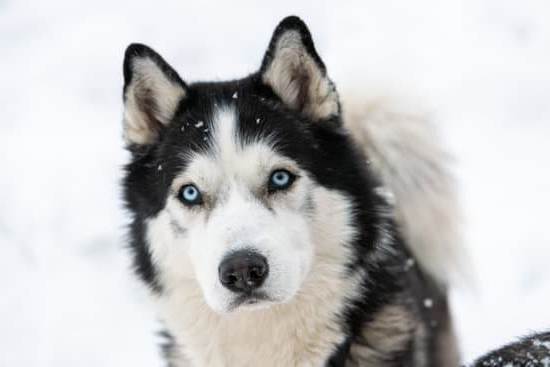Are you tired of constantly struggling to get your dog to release an object they have in their mouth? Learning how to train your dog to drop something is an essential skill that every pet owner should invest in. Whether it’s a dangerous item, something they shouldn’t have, or simply a game of fetch, having a reliable “drop it” command can make all the difference in keeping your furry friend safe and well-behaved.
Understanding the behavior behind why dogs hold onto objects is crucial in effectively training them to let go on command. By using the right training method, whether it’s positive reinforcement or traditional training, you can establish a strong foundation for teaching the drop command. In this introductory section, we will explore the importance of teaching your dog to drop something and highlight the benefits of mastering this essential skill.
Throughout this article, we will delve into the step-by-step process of teaching the drop command, practical applications for using it in real-life situations, as well as common mistakes to avoid when training your dog. By learning how to effectively communicate with your pet and consistently reinforcing the drop command over time, you can celebrate their progress and success with drop training.
So let’s dive into the world of training your dog to drop something and equip both you and your furry companion with this valuable skill.
Understanding the Behavior
Dogs holding onto objects can be a common behavior that pet owners encounter. This behavior stems from an instinctual desire to protect their possessions, whether it’s food, toys, or any item they view as valuable. Understanding why dogs hold onto objects is crucial in effectively training them to drop something on command.
One reason why dogs hold onto objects is rooted in their natural scavenging and hunting instincts. In the wild, dogs need to protect their resources from potential threats and competitors. As a result, they may exhibit possessive behaviors when it comes to certain items. Additionally, some dogs may hold onto objects as a way of seeking attention or engaging in play with their human companions.
To teach your dog to drop something on command, it’s essential to understand the underlying reasons behind this behavior. By using positive reinforcement methods and gaining insight into your dog’s individual motivations for holding onto objects, you can effectively train them to respond to the drop command.
According to professional dog trainers and animal behaviorists, implementing positive reinforcement techniques is the most effective way to train your dog to drop something. Positive reinforcement involves rewarding your dog with treats, praise, or playtime when they obey the drop command.
This method not only encourages good behavior but also strengthens the bond between you and your dog. On the other hand, traditional training methods that involve punishment or harsh corrections can lead to fear or anxiety in dogs, resulting in ineffective training outcomes.
Choosing the Right Training Method
When it comes to training your dog to drop something, choosing the right training method is crucial. There are two main approaches to dog training: positive reinforcement and traditional training. Each method has its own benefits and drawbacks, so it’s important to consider which approach will work best for your dog.
Positive Reinforcement
Positive reinforcement involves rewarding your dog for exhibiting the desired behavior. When teaching your dog to drop something using this method, you would praise and reward your dog with treats or verbal praise when they successfully drop an object on command. This method focuses on encouraging good behavior rather than punishing bad behavior.
Traditional Training
Traditional training often involves the use of corrections or punishment to discourage unwanted behaviors. In the context of teaching a dog to drop something, this might involve using a forceful command or physically removing the object from your dog’s mouth. While traditional training can be effective for some dogs, it can also cause stress or anxiety in others.
It’s important to carefully consider which training method will be most effective for your individual dog. Some dogs respond well to positive reinforcement, while others may require a more assertive approach. Regardless of the method you choose, consistency and patience are key when teaching your dog to drop something.
Step-by-Step Guide
To effectively train your dog to drop something, you will need to be patient, consistent, and diligent in your approach. Here is a step-by-step guide on how to teach the “drop” command to your furry companion:
- Start by selecting a high-value treat that your dog loves. This could be a small piece of cooked chicken, cheese, or any other delicious incentive.
- Once you have your dog’s attention, show them the treat and then firmly hold onto another object. Encourage your dog to take the item from you using a command such as “take it.”
- As soon as they grab the object in their mouth, say “drop” in a calm but assertive tone. At this point, do not physically try to take the item away from them.
Using positive reinforcement, praise and reward your dog when they release the object on their own. Repeat this process several times until your dog consistently responds to the “drop” command.
Remember that training takes time and patience. It’s important to remain consistent with your approach and always use positive reinforcement techniques. Over time, your dog will learn to respond reliably to the “drop” command in various situations.
Overall though, training can be an enjoyable experience for both you and your pet when done correctly. With practice and positive reinforcement techniques like these, you’ll soon have a well-trained pup ready to drop items on cue.
Practical Applications
Once your dog has successfully learned the drop command, you can start implementing it in various real-life situations where they may pick up or hold onto objects that they should not have. This can include instances such as when they have picked up food from the ground during a walk, grabbed an item that is not a dog toy, or refuses to release an item when playing.
One practical application of the drop command is during walks. Dogs are naturally curious and may pick up items such as food scraps, sticks, or other things that could be harmful to them. By using the drop command, you can teach your dog to release these items on command, keeping them safe and preventing any potential harm.
Another useful application of the drop command is during playtime. Many dogs love to play tug-of-war with their owners or other dogs. However, if your dog becomes too possessive of the toy or refuses to let go when asked, it can lead to aggression or resource guarding behavior. Teaching them the drop command can help prevent these issues and ensure safe and enjoyable play for everyone involved.
In addition, using the drop command in real-life situations not only reinforces their training but also helps strengthen the bond between you and your dog. By consistently practicing the drop command in different scenarios, you are building trust and communication with your pet, leading to a happier and healthier relationship.
| Real-Life Situation | Application of Drop Command |
|---|---|
| During walks | To prevent picking up harmful items |
| Playtime | To avoid possessiveness and aggression |
| Building Trust | Strengthening bond through consistent practice |
Common Mistakes to Avoid
When training your dog to drop something, it’s important to be aware of common mistakes that can hinder the training process and prevent your furry friend from mastering the drop command. By understanding these pitfalls, you can take proactive measures to avoid them and ensure successful training outcomes for your dog.
Here are some common mistakes to avoid when training your dog to drop something:
- Being Inconsistent: Consistency is key when it comes to training any behavior in dogs. If you are inconsistent with the cues and rewards you use during drop training, your dog may become confused and have difficulty understanding what is expected of them.
- Using Punishment: Resorting to punishment or harsh corrections when your dog doesn’t immediately comply with the drop command can be counterproductive. This can create fear or anxiety in your dog, making them less likely to cooperate during training sessions.
- Skipping Basic Training Steps: Before jumping into teaching the drop command, ensure that your dog has a solid foundation in basic obedience commands such as sit, stay, and come. Skipping these fundamental steps can make it more challenging for your dog to grasp the concept of dropping an object on command.
To effectively train your dog to drop something, it’s essential to steer clear of these common mistakes and take a positive and consistent approach throughout the training process.
By avoiding these pitfalls and focusing on positive reinforcement techniques, you can set yourself and your dog up for success in mastering the drop command.
Troubleshooting
Identify the Root Cause of the Issue
If your dog is struggling to drop an object, it’s important to first identify the root cause of the issue. There could be a variety of reasons why your dog is resisting the drop command, such as possessiveness, fear, or simply not understanding what is being asked of them. Take note of the specific situations in which your dog refuses to drop something and any body language or vocal cues they exhibit.
Revisit Training Techniques
If your dog is having trouble dropping objects, it may be time to revisit the training techniques you have been using. Positive reinforcement is often an effective method for teaching the drop command, but every dog is different and may respond better to alternative approaches. Consider consulting with a professional trainer or behaviorist who can provide personalized guidance on how to train your dog to drop something.
Addressing Behavioral Issues
In some cases, a dog’s refusal to drop an object may be rooted in behavioral issues that require additional attention and training. If you suspect that there are underlying behavioral issues at play, it’s important to address these before focusing specifically on drop training. Working with a professional can help you develop a comprehensive plan for addressing any behavioral concerns and creating a positive, trusting relationship with your dog.
By taking steps to troubleshoot and address any challenges your dog may have with dropping objects, you can make progress in this important aspect of their training. With patience, consistency, and a thorough understanding of your dog’s individual needs and behaviors, you can successfully train them to reliably respond to the drop command in a variety of situations.
Consistency Is Key
Once you have successfully trained your dog to drop something on command, it is crucial to maintain and reinforce this behavior over time. Consistency is key in ensuring that your dog continues to respond to the drop command in various situations. Without ongoing reinforcement, your dog may revert to holding onto objects or not obeying the command at all.
To maintain the drop command over time, it is important to practice regularly with your dog. Incorporate drop training into your daily routine, whether during playtime, walks, or training sessions. By consistently practicing the drop command, you are reinforcing its importance and helping your dog understand that dropping objects when commanded is a non-negotiable behavior.
In addition to regular practice, it is essential to use positive reinforcement techniques to maintain the drop command. Continue to reward your dog with treats, praise, and affection each time they successfully drop an object upon command.
This positive reinforcement will help solidify the behavior and ensure that your dog remains motivated to obey the drop command in various scenarios. Remember that consistent praise and rewards will encourage your dog to continue exhibiting the desired behavior of dropping an object when instructed.
Conclusion
In conclusion, teaching your dog to drop something is an important skill that can ensure their safety, prevent possession aggression, and improve their overall behavior. Understanding why dogs hold onto objects and choosing the right training method, such as positive reinforcement, are crucial steps in successfully teaching the drop command. By following a step-by-step guide and avoiding common training mistakes, you can effectively train your dog to drop items on command.
Practical applications of the drop command in real-life situations can be incredibly helpful, whether it’s preventing your dog from picking up harmful objects during a walk or releasing a toy during playtime. Consistency is key when maintaining the drop command over time, but it’s also important to celebrate your dog’s progress and success with drop training.
By recognizing their improvements and providing them with positive reinforcement, you can build a strong bond with your pet and enjoy the benefits of well-behaved behavior.
If you’re encountering challenges with getting your dog to drop an object or experiencing resistance during training, it’s essential to troubleshoot potential issues and seek professional guidance if necessary. Remember that patience, persistence, and a positive attitude are essential elements in successfully training your dog to drop something. With dedication and effort, you can empower your pet with this valuable command for their safety and happiness.
Frequently Asked Questions
How Do You Teach a Dog to Drop Something?
Teaching a dog to drop something involves using positive reinforcement. Start by playing with a toy and then offering a tasty treat in exchange for letting go of the toy. Repeat this process consistently until the dog learns the “drop it” command.
What Do I Do if My Dog Won’t Drop Something in His Mouth?
If your dog won’t drop something in his mouth, it’s important to avoid chasing or physically trying to remove the item. Instead, try using a high-value treat to lure the dog into releasing the item. Patience and consistency are key in reinforcing the “drop it” command.
Why Won’t My Dog Drop Things?
Dogs may refuse to drop things due to possessiveness, fear of losing an item, or lack of proper training. It’s important to understand why your dog is exhibiting this behavior in order to address it effectively through training and positive reinforcement techniques.

Welcome to the blog! I am a professional dog trainer and have been working with dogs for many years. In this blog, I will be discussing various topics related to dog training, including tips, tricks, and advice. I hope you find this information helpful and informative. Thanks for reading!





